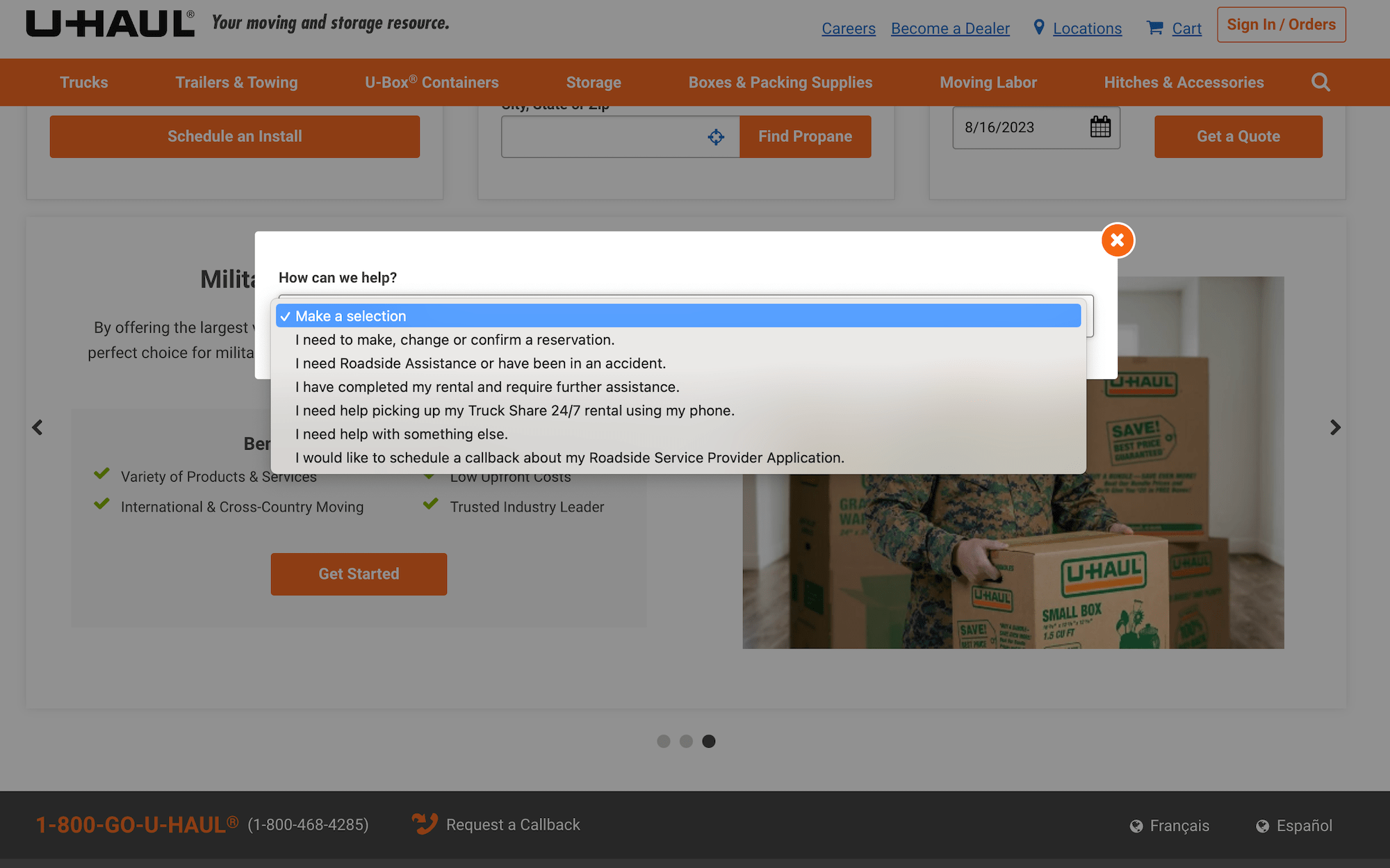Ironically enough, success in a call center may not be measured by the number of calls you’re handling daily. In fact, if your goal is to provide top-notch customer service, you might want to aim to reduce those numbers.
That’s right—fewer calls can equate to happier customers and more efficient operations. Lower volume means more capacity, right?
We’ve identified several strategies to downsize your volume by streamlining communication and empowering customers with self-service options. Coupled with an optimized knowledge base and first-call resolution training for staff, and you’ll undoubtedly decrease call volume without compromising service quality.
Finally, harnessing customer feedback for continual improvement and leveraging AI and automation tools will also contribute significantly towards this end goal.
Let’s take a look at the recipe for a leaner yet more effective call center.
Key takeaways
- Improve self-service options and a knowledge base to empower customers to find solutions themselves and reduce the load on the call center.
- Streamline communication channels by integrating multiple channels into one system, improving efficiency and customer experience.
- Train staff on first-call resolution, product knowledge, troubleshooting skills, and soft skills to enhance efficiency and customer satisfaction.
- Leverage AI and automation tools, like chatbots, virtual assistants, auto-dialers, and automated emails, to automate tasks, improve efficiency, and enhance customer experience.
1. Enhance customer self-service options.
As you likely know, ramping up your customer self-service options can take a huge load off your call center’s plate. Now, this should never be about stripping away a human touch. Rather, it’s about empowering customers by giving them access to solutions when they want them.
It’s time to consider enhancing your FAQs, knowledge bases, and online tutorials. Investing in a robust digital platform is key here.
- A system that is intuitive, user-friendly, and offers real-time assistance can significantly reduce inbound calls.
- Make sure you’re providing detailed step-by-step guides for common issues faced by your customers.
- Keep these platforms updated with recent information and ensure they’re easily navigable even for those who aren’t tech-savvy.
Another avenue worth exploring is chatbots. These AI-powered tools can handle simple queries round-the-clock, reducing the burden on live agents. Remember, an efficient self-service option doesn’t replace personal interaction but complements it by managing routine inquiries.
Empowerment leads to satisfaction—when customers find answers efficiently themselves, they feel competent and satisfied. By creating versatile self-service options, you’ll not only lighten the load on your call center but also boost customer confidence and loyalty.
2. Streamline communication channels.
Imagine being able to channel all customer inquiries through a single, efficient platform. It’s not only completely possible, but it could also dramatically streamline your communication processes. This can be achieved by integrating multiple channels like emails, social media messages, live chats and more into one unified system.
Two thoughts here to explore:
- The first thought is around integration. Using a platform that can handle a variety of communication channels—like Genesys, Five9, or Twilio—is key. Aim to ditch your disparate systems, as they’re ripe to create data silos.
- Funnel customer inquiries through one channel, even if they’re served in different channels. This will allow you to prioritize and work through tickets in the most efficient way. For example, on Walmart’s help site, you won’t find their phone number. But, after going through the chatbot, you can have the option to either chat with an agent or talk on the phone through an easy click-to-call. This way they funnel all inquiries through the chatbot to ensure the customer is getting to the right answer in the best way.
Adopting these strategies will help you serve your clients while reducing the pressure on your call center team. A well-managed communication process leads to satisfied customers who are less likely to make unnecessary calls—a win-win for everyone involved.
3. Utilize your knowledge base.
Implementing a knowledge base is like building a library of solutions for your customers, offering them an easy way to access information and solve common issues on their own. This self-service tool can be an invaluable asset in reducing the number of calls that come into your call center.
A well-structured knowledge base houses answers to frequently asked questions, product guides, step-by-step tutorials, and other useful customer resources. You’re not only empowering your customers with valuable insights, but you’re also giving them the confidence to handle small problems without needing to reach out for help.
To ensure its effectiveness, keep your knowledge base up-to-date and user-friendly. Make sure the content is easily understandable and searchable so that customers can find what they need swiftly. Furthermore, regularly ask for feedback from both users and staff members about how you might improve it.
An important caveat: don’t let your knowledge base get in the way of a phone call…
Offer a call transition at the end of knowledge base articles.
Customers desperately want a knowledge base to solve their problem. Some studies show that 91% of customers say they’d use a knowledge base if it met their needs.
But customers don’t want to be boxed into your knowledge base without an option to talk to a person.
The best option? Offer a simple click-to-call option at the bottom of your knowledge base article, or in the footer of your knowledge base, that allows customers to request a call from that page. Furthermore, a sophisticated click-to-call solution will also grab the page and history of the customer’s session and deliver it to the agent in a screen pop.
4. Train staff on first-call resolution.
Training your team to resolve customer issues on the first contact can significantly enhance your company’s reputation for efficient service. But this isn’t just about quick fixes—it’s ensuring your staff have the right skills and knowledge to handle a variety of situations. This way, they can provide solutions that meet the customer’s needs immediately.
Training
Start with comprehensive training programs focusing on product knowledge and troubleshooting procedures. Your staff must be familiar with all aspects of what you’re offering, from features to common problems, and how they can be addressed.
Lean into real-time feedback to identify areas for improvement. The more you hear from customers on what they’re looking for, the better you can train your staff—and beef up your self-service in the process!
Also, invest in soft skills training: communication techniques, empathy enhancement sessions, and problem-solving classes are vital, too. They equip representatives with essential tools for effective interactions that yield solutions promptly, creating satisfied customers who are less likely to call back unnecessarily.
Decision authority and routing
Empower agents to make decisions during calls. If they’re constantly consulting supervisors or referring calls elsewhere, this prolongs resolution time. Give them autonomy within defined limits—it fosters confidence in their abilities while maintaining quality control.
Routing is a big piece here, too. More than 70% of customers get irritated when their call is transferred. Audit and optimize your IVR experience, and use modern approaches to call routing to get customers where they need to be.
Lastly, a good click-to-call solution can work as a digital IVR to route your customers directly from the website to the correct department without making any moves on the dial pad. You can see this on U-Haul’s website (and for bonus points, check out their case study to see how they did it).
5. Use customer feedback for improvement.
As you sift through customer feedback, it’s like unearthing a treasure chest of insights—not all gems, but each valuable in its own way for steering improvements. This feedback can help you reduce calls to your call center by identifying areas where customers need more support or better information.
Here are three ways to use customer feedback:
- Identify trends. Look for common issues or questions that lead to repeated calls. Do multiple customers struggle with the same problem? That’s an opportunity to fix a process or clarify instructions. Do they complain about long wait times? Time to look at a callback solution.
- Improve training. Use specific examples from feedback to refine your team’s training. If customers often complain about the attitude or demeanor of your agents, it’s time to implement some empathy training.
- Update self-service options: Are there queries that could be answered online or via an automated service? Feedback can highlight these opportunities and help you expand self-service options.
Remember, every piece of feedback is a gift from your customers, an invitation to improve their experience and potentially reduce the number of calls coming into your center. By embracing these insights, you’re not just serving others, you’re also refining operations and boosting satisfaction levels across the board.
6. Leverage AI and automation tools.
Imagine a world where you’re able to harness the power of artificial intelligence (AI) and automation tools, turning your customer service into a well-oiled machine that streamlines processes and delivers top-notch assistance. In this world, not only will you be reducing call volumes at your call center, but you’ll also be improving your call center’s efficiency.
AI can help automate repetitive tasks and respond to simple queries via chatbots or virtual assistants. This means your team can focus on more complex issues—improving productivity while keeping customers satisfied.
Here’s an overview of how automated technologies can benefit your call center:
| Technology | Benefit |
| AI chatbots | Respond to simple queries 24/7 without human intervention. |
| Virtual assistants | Provide personalized customer service with natural language processing. |
| Auto-dialers | Automate outbound calls for reminders or follow-ups. |
| Automated emails | Send instant responses or regular updates automatically. |
| SMS notifications | Keep reconnects high for callbacks, while providing a chance to to self serve. |
By implementing these strategies, you’re not just cutting down on calls, you’re enhancing the whole customer experience by offering swift, efficient service.
Next steps
There’s a lot to unpack in this post, but you don’t have to do it alone: there’s a lot of software out there that can cut down ramp time for most of these. To recap:
- Build out a strong self-service channel through a robust knowledge base CMS and AI chatbots or virtual assistants.
- Keep communication flowing into one channel as much as you can using a capable CCaaS platform.
- Get customers to the right person without transfers by utilizing a click-to-call solution that acts as a digital IVR.
- Train staff based on customer feedback. (Bonus if you can get as close to real-time as possible!)
Frequently asked questions
Why should I reduce calls in my call center?
While reducing call center staff is the best way to save money for your company, the best way to trim operations is to lower your call volume. There are plenty of systems that can help agents answer customer questions as quickly as possible, but the only way to get handle time to zero is by eliminating the call altogether. This will drastically reduce overhead on call center agents servicing calls.
How can I measure the productivity of my call center agents?
Measure your call center agents’ productivity by tracking key performance indicators (KPIs) such as average handle time, first call resolution, and customer satisfaction scores. Use software that allows real-time monitoring of these metrics.
Regularly review their performance and provide constructive feedback for improvement. Remember, a productive agent isn’t just fast but also efficient in providing quality service to customers.
Maintain a balance between speed and quality to ensure high productivity levels.






